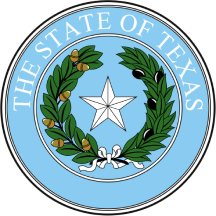Federal regulators have come under scrutiny for their decisions regarding Camp Mystic, a girls' summer camp located in a flood-prone area of Texas. A review by The Associated Press reveals that the Federal Emergency Management Agency (FEMA) granted multiple appeals to remove the camp's buildings from its 100-year flood map. This action has raised concerns about safety and oversight, especially following a tragic flood that resulted in the deaths of at least 27 campers and counselors on July 4.
In 2011, FEMA designated Camp Mystic as part of a "Special Flood Hazard Area" in its National Flood Insurance map for Kerr County. This designation indicated that the camp was at risk of flooding during a severe storm, which has a 1% chance of occurring in any given year. Despite this, FEMA amended the flood map in 2013, 2019, and 2020, removing a total of 30 structures from the flood hazard area. These amendments allowed the camp to operate and expand with fewer restrictions.
The camp, situated along the Guadalupe River in a region known for flash floods, was devastated by historic floodwaters that swept through its property. Experts have noted that the flood was far more severe than what FEMA's 100-year flood designation anticipated. Syracuse University associate professor Sarah Pralle, who studies FEMA's flood map determinations, expressed concern over the exemptions granted to the camp. "It’s a mystery to me why they weren’t taking proactive steps to move structures away from the risk," she said.
FEMA's decisions to exempt Camp Mystic's buildings from flood regulations have been criticized as potentially motivated by the camp's desire to avoid flood insurance requirements and lower insurance premiums. The camp did not respond to requests for comment but referred to the flood as an "unimaginable tragedy."
An analysis of the flood risks at both Camp Mystic sites revealed that at least 12 structures at the original Guadalupe site were fully within FEMA's 100-year flood plain. Jeremy Porter, head of climate implications at First Street, a data science company, stated that FEMA's flood insurance maps often underestimate risks, particularly from smaller waterways.
FEMA has defended its flood map amendments, stating that they are "snapshots in time" and do not predict where flooding will occur. The agency emphasized that the maps are designed to show minimum standards for floodplain management.
The process for property owners to challenge FEMA's flood map designations can be arduous, often requiring detailed studies to redraw flood plain boundaries. Chris Steubing, executive director of the Texas Floodplain Management Association, noted that this process can lead to more accurate maps but may favor wealthier property owners.
Despite warnings from FEMA that parts of Camp Mystic remained on the flood map, local officials allowed the camp to expand significantly. The camp's owners cited its "tremendous success" as justification for the expansion, which included new cabins and facilities. At the time of the flood, the camp had over 550 campers and more than 100 staff members.
As the community grapples with the aftermath of the flood, questions remain about the adequacy of floodplain management and the decisions made by federal and local authorities regarding Camp Mystic.

 Local News in Texas
Local News in Texas

 New York Post
New York Post CNN
CNN Spectrum News Louisville
Spectrum News Louisville America News
America News Raw Story
Raw Story Reuters US Business
Reuters US Business AlterNet
AlterNet KRWG Public Media
KRWG Public Media Reform Austin
Reform Austin Associated Press Top News
Associated Press Top News RadarOnline
RadarOnline